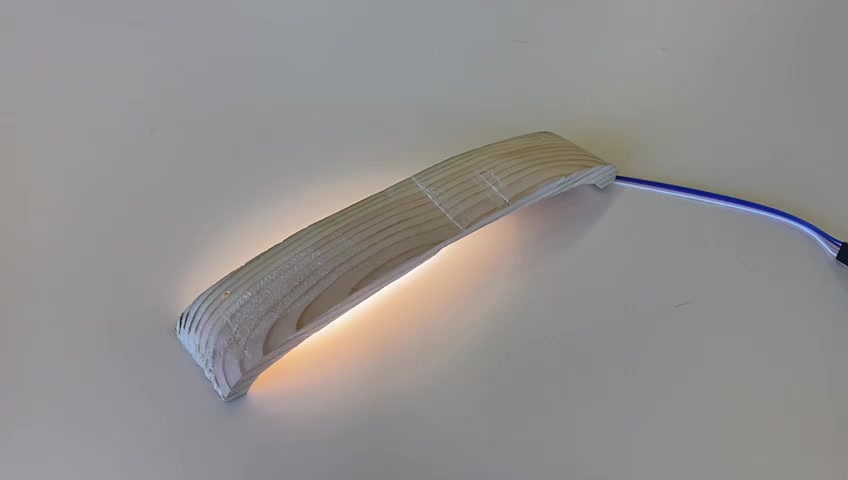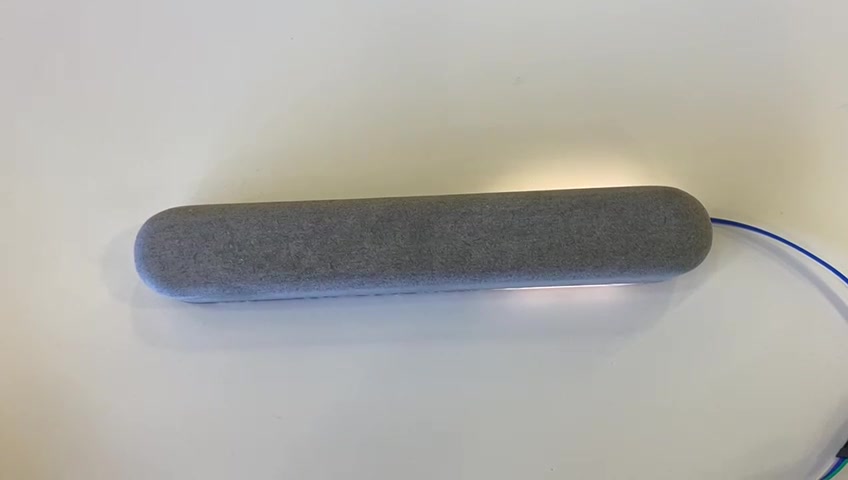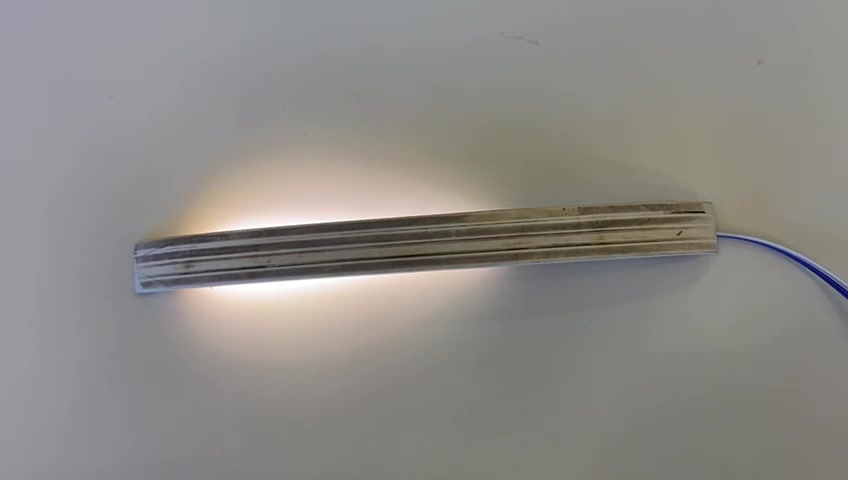
Smart Emotional Home | Milab
Smart Emotional Home is a research aiming to utilize technology for the purpose of enriching individuals' emotional experiences within the confines of their homes.
ROLE
Project Manager |
Leading a team of 4
Design
UX research
DURATION
December 2020 - October 2021
INTRODUCTION
The project was done as part of my work as a project manager at the Milab (HCI innovation lab), Reichman University. The research was led by professor Oren Zukerman.
My role in the project started by leading the need study, and the design & development of the interactive light object. The following overview elaborates on these aspects.
The emotional significance of home extends beyond its physical characteristics, yet current industry efforts prioritize automation and efficiency, sidelining the emotional dimension. To bridge this gap, we propose the concept of an "emotional home," leveraging technology to amplify individuals' emotional experiences within their residences.
Informed by insights from psychology literature and existing HCI prototypes, we conducted an iterative design process, resulting in a prototype that integrates expressive light animations with an object that blends naturally into the home environment. Our research illuminates the potential of responsive household items to evoke emotional expression and bolster participants' perception of their home as a factor influencing their emotions.
NEED STUDY
INTERVIEWS
We started by interviewing 10 participants (9 female, 1 male). Participants came from a variety of backgrounds in terms of age, occupation, social status and number of housemates. Participants volunteered to take part in the study. Ages varied from 22 to 70.
We conducted a semi-structured interview which was done by phone call. Each interview was approximately 30 minutes long. Semi-structured interviewing provided flexibility during data collection while remaining on topic. The interview provided a chance to explore the thoughts, emotions, and attitudes of the participants towards their home.
ANALYSIS
The interviews were transcribed and analyzed using Thematic Coding. The analysis included five stages:
-
A collection of interview transcriptions from each condition were read several times to develop a general understanding of the data
-
Three researchers identified initial themes (individually), and discussed them with a fourth researcher in-depth until inconsistencies were resolved
-
A list of mutually-agreed themes was defined
-
All three researchers used the mutually-agreed themes to analyze a selection of the interviews independently (four interviews from each condition)
-
Following inter-rater reliability confirmation, the three raters analyzed the rest of the data.
296 quotes were analyzed. The analysis led to five main themes:
Home feelings (166)
These quotes reflect participants' descriptions of their homes in relation to their feelings. A personal bond to the home is an example of this theme, as are feelings of security, social connectedness, and belonging
Home values (41)
This theme reflected participants' description of personal values connected to the home
Home systems (35)
This theme reflected participants description of different systems and objects in the home
Home areas (21)
This theme reflected participants describing specific areas in the home
General home information(33)
This theme reflected participants describing general information regarding the home which wasn’t classified as connected to any of the other themes

Our thematic analysis shows that technology can enhance the emotional value/aspects of the home. The findings suggest that responsive behavior of household items such as light objects can indeed evoke emotional expressions, and strengthen participant's interpretation of their home as an entity, that has an effect on their emotions.
RELATED RECORDS
In the course of the need study and project design, we also examined related work in the domains of existing HCI prototypes associated with emotional home, home architecture, and principles of light design. It's worth mentioning that, as this is a presentation rather than the paper itself, I won't emphasize this aspect.
DESIGN PROCESS
Following the Need Study, we defined our design principles:
-
Light as the spiritual state of the home
-
Light empowers home-oriented rituals for meaningful connection with the home environment
Also the main use cases were identified: welcome, goodbye, team/coffee movement, taking care of the plants.
The design process faced three challenges: creating light movement, designing the physical object, and seamlessly integrating technology.
Light movement design was inspired by gestalt theory and user experiences, It involved conducting design experiments to test how light interacts with physical materials such as tables, walls, or shelves. These insights were then combined with direct user experiences throughout the prototype iterations. User insights gathered during pilot studies played a significant role in shaping this aspect of the design.

INSPIRATION OF LIGHT INTERACTIONS
Rhythm art - a principle of design that suggests movement or action. Rhythm is usually achieved through repetition of lines, shapes, colors, and more. It creates a visual tempo in artworks and provides a path for the viewer's eye to follow.

Georges Seurat, Sketch for Cabaret, 1890

Gestalt Common Fate (Synchrony) - Regardless of how far apart the elements are placed or how dissimilar they appear, if they are seen as moving or changing together, they'll be perceived as being related.

"Home as an entity"
Light emerged as a relevant design aspect (practical vs. spiritual), Light gestures complement my action at home.
Similar animation of a "creature"

To what extent do we want to create user engagement?
To what extent do we want to make the user want to interact/touch?
THE DESIGN PROCESS STARTED WITH A LIGHT PATTERN DESIGN
We started designing utilizing SPRITE stop-motion software to create diverse light patterns on a tablet screen, emphasizing elements like balance, movement, contrast, unity, and rhythm.
Through experimentation, we identified a single long strip of lights as the most expressive and unique animation.
In a prestudy pilot with 12 participants, tablets displaying these patterns were arranged in the room. Participants described the "feeling" associated with each pattern upon entering.




OBJECT DESIGN PROCESS
In the next phase of the design, we incorporated a light animation system utilizing LED strips. Our goal was to seamlessly integrate the light patterns with the existing home environment, using light that was already present. We specifically selected warm white light, considering its natural fit within a home setting. The LED strip was connected to a microcontroller, and the light animations were coded in C++, based on carefully designed stop-motion patterns.
Two key principles guided our design:
-
Ensuring the light object seamlessly blends into home environments, considering factors like finish, color, and material
-
Positioning the LED strip downward for a reflected light effect, projecting patterns to highlight the surrounding area.
Various prototypes, including foam models, 3D-printed designs, and wooden prototypes, were developed to assess light diffusion, electronics fit, and overall design perception in a home setting. Iterative testing with LED strips in prototypes proved invaluable for refining our design as it's challenging to predict light diffusion accurately.

FINAL MODEL
Internally, the design team chose the final form factor, striking a balance between three key considerations. The design comprises two 3D-printed PLA parts: an inner shell housing electronic components (LED strip, ESP32 WiFi board, and 18650 battery) and an outer shell designed to elevate the LED strip for optimal light diffusion.

EXPERIMENTAL SETTINGS
The experiment room, situated in a spacious lab, was crafted to emulate a home's living room. A doormat welcomed at the entrance, leading to an interior defined by a bamboo wood divider shaping an entrance corridor. Two rugs adorned the space—one in the corridor and another at the center beneath a low coffee table featuring a teapot and glasses. Adjacent to this setup was a cushioned chair. At the room's far end, two pots with plants and a small water pitcher added a natural touch. Privacy was ensured by closed curtains, and the room was softly lit with a standing lamp instead of fluorescent lighting. For documentation, a video camera was strategically placed within the room.

Within the room, we placed 4 ‘light objects’ contained a Led strip connected to an Arduino and was controlled via Wifi by a researcher outside the room.
Each participant performed four tasks within the "living room", each task was accompanied by a light object. The tasks were:
-
Enter the room
-
Drink tea
-
Water the plants
-
Exit the room
These specific tasks were revealed from the “Home perception Interview” as they represent the everyday routine that has a strong connection to home.

TAKEAWAYS
My involvement in the project concluded with the completion of my master's degree, and I left the laboratory to pursue a career in industry. I led the project until the demo stage before the experiment. Given that the article has not been published, I won't delve into its results.
The experience of working in the lab under the guidance of Prof. Oren Zuckerman and leading a team was extremely valuable to me.
It was always my ambition to help transform technology into something that fosters human connection and contributes to a sense of warmth, belonging, and closeness. Therefore, I felt a natural connection to the emotional home project. During my time in the lab, I learned that systematically examining things goes beyond good intentions.




